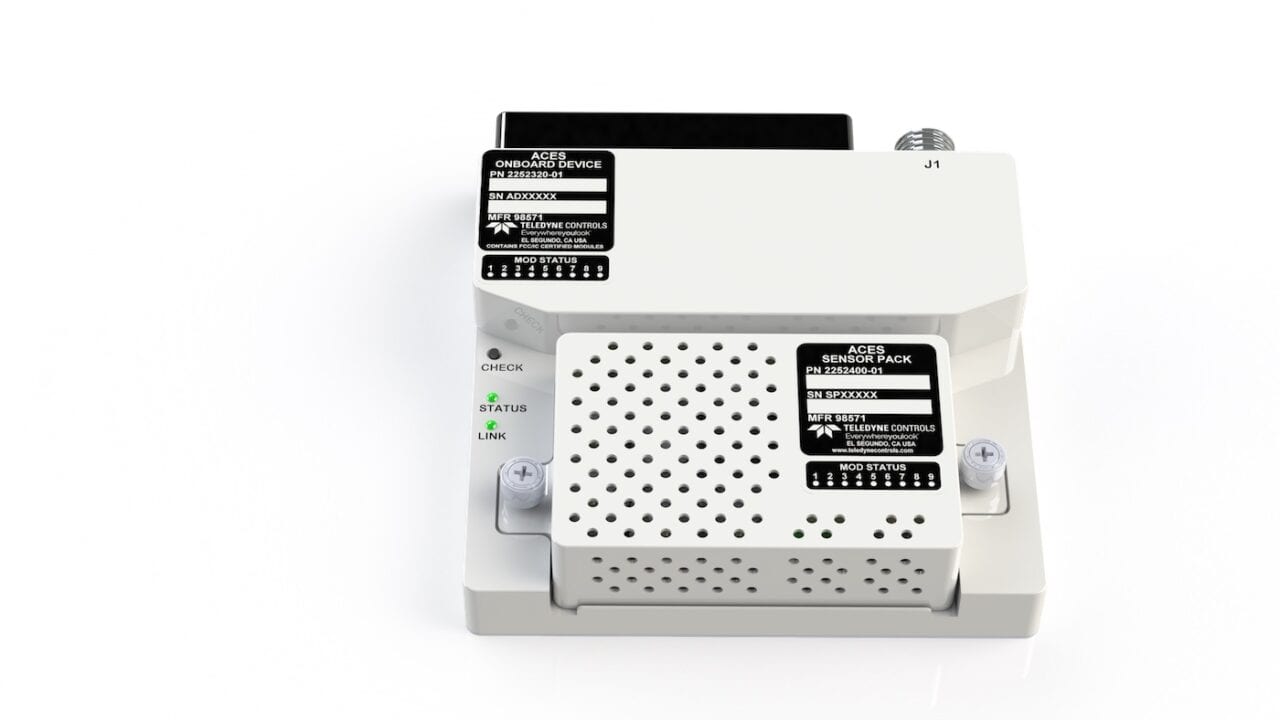
The new ACES cabin air quality monitoring system from Teledyne Controls has been certified for Boeing 737 aircraft. (Teledyne Controls)
Teledyne Controls has obtained Supplemental Type Certification (STC) approval for the installation of its new Aircraft Cabin Environment Sensor (ACES) on Boeing 737 aircraft.
The El Segundo, California-based avionics manufacturer developed the ACES system to provide a new method of understanding and analyzing cabin air quality on a regular basis. Teledyne described ACES as the “first FAA-certified product of its type” in a March 15 press release.
“We are very excited to bring this important new capability to the aviation industry. The need for accurate and comprehensive air quality data on aircraft has been recognized for decades,” George Bobb, president of Teledyne Controls said in the release.
The upgrade required to enable the use of ACES onboard 737s requires the installation of the ACES Onboard Device (AOD), which are installed in the flight deck, as well as the fore and aft areas of the main cabin. Using a combination of sensors and aircraft data acquisition technology, the system is designed to capture information about the cabin environment.
“ACES records 13 environmental parameters, including data on airborne particulates from 0.3 to 10 microns in size, carbon dioxide, carbon monoxide, ozone, volatile organic compounds and several other parameters. These parameters track substances that can potentially be found in the cabin and are known to be areas of concern for passengers and crew, such as hydraulic fluid, engine oil, de-icing fluid or fuel,” a representative for Teledyne Controls told Avionics international in an emailed statement.
Teledyne is recommending a minimum of three AODs installed per aircraft for narrowbody aircraft, with that numbers calling up to as many as seven devices on larger airframes. Multiple ACES units are distributed in the aircraft to capture a comprehensive understanding of the air quality.
The recorded data is stored in the compact ACES units and is automatically transmitted to the ACES Cloud Service portal for processing and analysis upon landing. According to Teledyne, the system is capable of transmitting this data without the use of any aircraft connectivity systems.
Data captured by ACES is automatically transmitted, via cellular or WiFi, to the ACES Cloud Service. Airlines also have the option to transfer it to their own data platform for advanced analytics.
By gaining access to cabin air quality data on a per-flight basis, the idea behind the ACES system is that it will give airlines the ability to more easily monitor emerging problems and identify sources of cabin air contaminants, such as smoke or fume events that can occur.
“The data transfer happens seamlessly and securely via the ACES built-in wireless module, which leverages both cellular (4G LTE) and WiFi networks while the aircraft is on the ground. With an available Wireless Access Point and air-to-ground connectivity, the data can be sent continuously during flight,” the representative said.
ACES is currently available as a retrofit installation for the 737, while certification for other aircraft types is currently in development. Teledyne said a “major” undisclosed U.S. airline has already installed and started using the first ACES system.